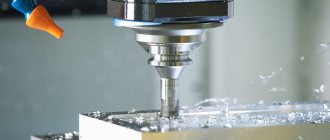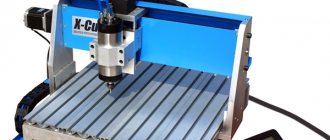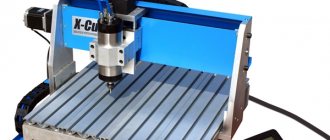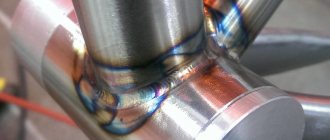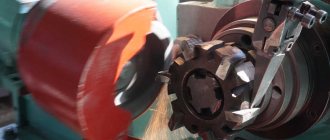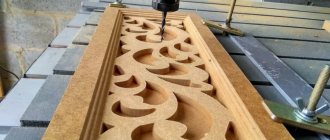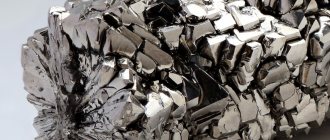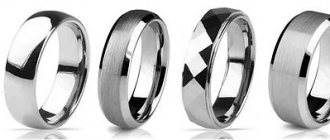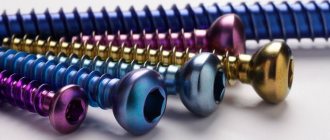Spread the love
Titanium and its alloys are increasingly used in the aerospace and biomedical fields, which take advantage of its unique properties. However, machining titanium also presents unique challenges faced by engineers accustomed to machining other metals. Here we'll look at why machining titanium is so difficult and look at the different techniques that can be used to get the best results when machining titanium.
WHY IS TITANIUM SO POPULAR
While aluminum and aluminum alloys were previously the materials of choice in the aerospace industry, titanium and titanium alloys are increasingly being used in new aircraft designs. These materials are also used in the biomedical industry. Reasons for their popularity include light weight, high strength, excellent fatigue performance and high resistance to corrosive environments, lack of rust and degradation. Titanium parts last longer and provide better performance and results than parts made from other metals and materials.
Features of grinding titanium alloys
Processing of durable materials, for example, titanium alloys, is used in mechanical engineering, aviation, rocket and space technology, metallurgy, oil and gas industries.
In the process of processing titanium workpieces, the service life of the wheels decreases by 15-20 times, and the costs of straightening reach 60-70% of the total time spent on work.
Finishing is also difficult. Burn marks may appear on the alloys, chips may stick, and the bonds in the oxide film are destroyed. All this leads to product defects.
Grinding of such workpieces must be carried out at low machine speeds with special modes. Parts can be strengthened by plastic deformation to achieve higher quality. At the end of the work, the master must check the workpiece for burns or other possible defects.
In addition to grinding, you can choose from abrasive or blade machining of titanium alloys. You can complete the grinding with a continuous abrasive belt (applied with the appropriate size of abrasive grains) or a silicon wheel.
WHY IS TITANIUM SO HARD TO MACHINE?
The very properties that make titanium such a useful and high-performance metal are also properties that can make it difficult to process. Just as with aluminum and aluminum alloys, up to 90% of the material may need to be milled and turned to produce the final part.
Titanium alloys have a low modulus of elasticity, which causes vibration during processing. This may lead to deterioration in the surface quality of the finished product.
Due to titanium's high tendency to work harden and the alloy's tackiness, turning and drilling produces long, continuous chips that can entangle the tool and make it difficult to operate. This virtually eliminates the possibility of automating titanium processing.
Despite these setbacks, there are methods that make machining titanium easier.
Titanium welding technology - description and step-by-step instructions with video
This metal is not classified as rare. There is much more of it in the earth's crust than, for example, lead, zinc or copper. Titanium successfully combines the low density and strength of alloys based on it, and if we take into account the resistance to corrosion even in an aggressive environment, then the interest in it in many industries is quite understandable.
The high price of Ti (the 22nd element of the periodic table) is explained by the fact that its processing is a rather complex and expensive process. This article will introduce the reader to titanium welding technologies.
general information
Without knowing the properties and characteristics of the metal and its alloys, it is quite difficult to understand all the nuances of welding.
- Density of titanium (g/cm³) – 4.51.
- Strength (MPa): metal – within 267 – 337, alloys – up to 1,230.
- Melting point (ºС): 1668.
- The ability of titanium to spontaneously combust in an oxygen environment.
- Low thermal conductivity.
- Exceeding the temperature value by more than 400 ºС initiates the activity of the metal.
- Titanium intensively absorbs hydrogen and reacts violently to contact with nitrogen.
- Under the influence of carbon dioxide and water vapor, it quickly oxidizes.
In addition, it is necessary to take into account that the metal can be in one of two stable phases, which are denoted by the Latin letters α and β. How are they characterized?
- Phase α – titanium is in this state at ambient temperature. The structure is fine-grained, and the metal is completely inert to the cooling rate.
- Phase β – titanium enters this state at temperatures above 880 ºС. The grain becomes larger, and sensitivity to cooling (process speed) appears.
These phases can be stabilized by introducing certain additives and alloying elements into the metal - O, N, Al (for α) or V, Cr, Mn (for β). Therefore, titanium alloys, depending on the type of additives, are divided into groups:
- VT1 - VT5.1 They are called α - alloys. They have ductility and weld well, but heat treatment does not increase their strength.
- VT 15 - 22. Group β - alloys are welded much worse, and cold cracks may appear. At the same time, the grain sizes of the structure increase, and this affects the quality of the connection of the segments for the worse. The advantage is that heat treatment partially increases the strength of the alloy.
- VT4 – 8, OT4. The α β group is essentially an intermediate link. The properties of such alloys are largely determined by the type and percentage of added additives.
Not all common technologies are applicable to this metal and its alloys. The reason is the chemical activity of titanium. The entry of foreign compounds (nitrides, oxides, carbides) into the working area sharply reduces the quality of the weld.
- Arc flux.
- Cold.
- Electron beam (plasma arc).
- In an argon environment. The most popular option, although there are some others.
- High speed of technological operation. This is due to the fact that prolonged thermal exposure in a separate area leads to a change in the structure of the material due to an increase in grain size. As a result, the metal becomes brittle (brittle).
- Complete isolation from the atmosphere. And not only the working area (welding pool), but also those areas that are heated to 625 (or more) ºС.
Advantages:
- High quality welded joint.
- Work at low currents. Consequently, it is possible to weld parts of small thickness (thin-walled), since the likelihood of burn-through is practically eliminated.
- Possibility of increasing the volume of a part in defective areas (for example, in places where cavities form).
- Obtaining a seam with any parameters, which allows you to process (join) both large-sized samples and relatively small ones.
Mechanical treatment and degreasing, if necessary, acid etching. The goal is to completely remove the oxide film approximately 20 mm from the edges to be joined. The specificity is that all work must be carried out wearing protective gloves (mittens). Touching parts with hands is unacceptable due to possible contamination of the alloy.
If mechanical cleaning is not enough, then resort to oxygen gas cleaning (using a burner).
- Sandpaper.
- Scrapers.
- Metal brushes with stainless steel wire with a cross-section of 0.25 (±5) mm or other suitable devices (abrasive materials).
- Fluorine solution, hydrochloric acid (heated to 60 - 65 ºС).
- Absence of burrs, cracks, inclusions, etc. on the sample.
- Smooth silver shade of titanium alloy.
Wire
It is selected in accordance with the group of the alloy to be welded (see above). The tag (or packaging) must contain the necessary information, since all products are labeled.
Before use, the wire is cleaned (if necessary, with sandpaper no higher than No. 12) and degreased. It can be prepared in advance, but in this case it is sealed (for example, wrapped in plastic) and placed in a tightly closed pencil case (tube). But storage in such conditions is no more than 5 days.
HOW TO TREAT TITANIUM
Machining titanium requires coated carbide tools that will resist the stickiness of the alloy and break up long chips. The tool's coating also helps dissipate the heat generated during machining.
Maintaining low radial engagement is important to counteract the effects of heat generation and strain hardening tendencies. Increasing the number of flutes in end mills can help counteract lower feed per tooth to improve productivity.
Using high pressure coolant helps reduce heat and damage to the tool.
The techniques used when machining titanium can also help improve results. By using lift milling, an arc ending with a 45 degree chamfer, using an auxiliary relief tool design, varying the axial depth, and using a tool at least 70% smaller than the tool pocket, you can reduce tool damage and get better machining results titanium.
By carefully understanding the unique properties of titanium and adjusting your processing accordingly, you can achieve the best results for your tool and finished part.
Titanium alloys and aluminum alloys are similar in the following respects: Both types of metals are used to make aircraft structural components, and in both cases, a component may require 90 percent of the material to be milled before the part is finished. Many shops would probably like their metals to have more in common than this.
Titanium metal – resistance to acids and alkalis
Titanium metal should be considered a material of high corrosion resistance to oxidizing substances, among which are nitric, chromic acid and similar chemistry. However, high concentration non-oxidizing chemistry (hydrochloric, sulfuric acids) at high temperatures can cause corrosion of titanium.
Therefore, for high-temperature conditions, it is recommended to use corrosion-resistant titanium metal alloys (Ti-0.15Pd, Ti-Ni-Pd-Ru-Cr (AKOT) and others). The same applies to the action of highly concentrated alkalis and high-temperature chloride solutions.
Unlike stainless steel and copper alloys, titanium metal is not susceptible to pitting, stress cracking, or corrosion in general. However, titanium metal is susceptible to crevice corrosion under the influence of highly concentrated solutions at high temperatures. Here, accordingly, corrosion-resistant titanium alloys (Ti-0.15Pd, AKOT and others) again become relevant for use.
Titanium, as a metal, is susceptible to stress cracking only under certain special conditions. The erosion resistance of commercially pure titanium significantly exceeds that of copper alloys. Compared to other popular metals, titanium has a higher electrical potential.
Therefore, if titanium metal is in contact in an electrically conductive solution with other metals having a lower potential (copper alloys and aluminum), the corrosion of other metals is accelerated (galvanic corrosion effect).
Diagram for the method of anodizing a titanium surface: 1 - vessel for electrolyte; 2 — cathode (aluminum); 3 — anode (titanium); 4 - electrolyte; 5 - ammeter; 6 - voltmeter; 7 - DC source
Under the conditions of contact of austenitic stainless steels (SUS304 and SUS316) with titanium metal at room temperature, galvanic corrosion problems generally do not occur. The reason is the smaller potential difference between the noted steels and titanium.
Regarding the reactivity of the metal towards gas, titanium has a strong affinity for gases:
- oxygen,
- hydrogen,
- nitrogen.
Accordingly, care must be taken regarding operating conditions of use, particularly temperatures and pressures. Titanium exhibits corrosion resistance to moisture-containing chlorine gas, but reacts strongly to dry chlorine gas.
Keep radial engagement low
One of the most important tasks when processing titanium is heat removal. In this metal, a relatively small amount of heat generated during processing is dissipated along with the chips. Compared to machining other metals, when machining titanium, a greater percentage of the heat goes into the tool. Because of this effect, the choice of radial engagement dictates the choice of surface velocity in that metal.
Titanium processing. Low radial engagement
The graph shows that a relatively low surface speed is required to completely cut the slots, i.e. engage 180 degrees. But reducing radial engagement reduces the time the cutting edge generates heat and gives the cutting edge more time to cool before entering the material on the next revolution. Thus, by reducing the radial engagement, the cutting speed can be increased while maintaining the temperature at the cutting point. For finishing applications, a milling process consisting of a very small arc of contact with a sharp, ground cutting edge, high cutting speeds and minimal feed per tooth can provide exceptional results.
Difficulties in processing titanium products
In reality, everything is somewhat more complicated than it seems at first glance. This metal has reduced thermal conductivity and is capable of scuffing and sticking. In addition, the difficulty lies in the fact that titanium is unusually strong and is capable of being soldered to the cutting tool during thermal work (after all, the cutter also consists of metal and is almost always softer than the workpiece). As a result, the tool wears out especially quickly and requires constant replacement.
When talking about metal processing, professionals mean several different types of work with titanium parts. They have their own secrets that allow them to neutralize the negative properties of this metal or reduce them to a minimum. For example, special cooling compounds will help reduce metal scuffing or sticking, as well as reduce the amount of heat generated when cutting titanium.
Titanium sheets are cut using guillotine shears. Rolled section metal of large diameter is usually cut with special mechanical saws. This tool is distinguished by the fact that its blade tooth is quite large. If the bar has a smaller diameter, you can use a lathe. By the way, turning of this metal is carried out with cutters made of especially strong alloys. But even under this circumstance, the operating speed must be reduced and is usually inferior to the speed that is observed when processing stainless steel.
Milling titanium parts also causes difficulties: metal begins to stick to the milling teeth. To avoid this, it is necessary to use a cutter made of high hardness alloys. Liquids with a high viscosity level are used as coolants.
Special attention should be paid to drilling titanium elements. Chips can accumulate in the grooves, causing the drill to become deformed. Titanium can be drilled using steel high-speed tools.
Titanium can also be used as a material for the components of any structures. Parts made of this metal need to be connected, and several methods are used here. It is worth considering this issue in more detail.
Features of welding work on titanium
Welding is the most commonly used method for joining titanium parts. At first, any attempt at titanium welding ended in failure. Various reasons were given for this. It was believed that changes were occurring in the microstructure of the metal, that titanium reacted with nitrogen, oxygen and hydrogen contained in the air. Among other factors, an increase in grain size when the metal was heated was mentioned. In any case, the seams turned out to be extremely fragile. However, all these problems were quickly solved with the help of new technologies. Therefore, at present, welding titanium elements does not cause any particular difficulties and is considered commonplace.
At the same time, certain nuances are still observed when carrying out welding work. Most often, this is expressed in the fact that the welding seam must be constantly protected from impurities that contaminate it. To avoid this, welders use fluxes that operate without oxygen, as well as pure inert gas. Specialized gaskets and visors are also used for protection - they allow you to cover the cooling seams and prevent contamination.
Such metalworking services require increased welding speed. This makes it possible to reduce the increase in grain size and delay any deformation of the microstructure of the material. Welding is carried out under standard conditions. Separate precautions are used to protect the hot metal from reacting with air.
Read also: DIY car repair cart
Welding can also be carried out in a completely controlled atmosphere. It is necessary to observe it when it is necessary to avoid even the possibility of contamination of the seam. Such requirements are put forward for the most critical welding work with a guarantee of 100% cleanliness.
If you need to connect small parts, the work is carried out in a special chamber, which is completely filled with inert gas. So that the welder can see the entire scope of work, the camera is equipped with a special window.
If it is necessary to connect large structural elements, the work is carried out in a hermetically sealed room. Any welding must be carried out by trained people, and in this situation only more professional welders with impressive experience are allowed to work. For them, life support systems are provided in the room.
Other methods of joining titanium parts
Sometimes welding titanium does not seem practical. In this case, soldering is often used. This type of processing of titanium material is quite complex. The reason is that when exposed to temperature, the oxide film on the surface of the part leads to a very weak connection, regardless of what metal the titanium is soldered to. Therefore, of all the metals that ideally interact with titanium during soldering, only aluminum and silver of high purity are suitable.
Another way to connect titanium products with each other or with parts made of other metals is riveting. This method, like the use of bolts, is mechanical. If a titanium rivet is installed, the work is significantly longer. When using bolts, it is necessary to coat them with Teflon or silver, otherwise titanium adhesion cannot be avoided, and the connection itself will be quite fragile.
Ways to neutralize the disadvantages of titanium
The disadvantage of this unique metal is scuffing and sticking that occurs during friction. As a result, accelerated wear of the titanium alloy occurs. If metal milling is used, this circumstance cannot be ignored. Sliding along the metal surface, titanium reacts and begins to stick, gradually absorbing the entire part.
However, the top layer of titanium can be made more durable, resistant to abrasion and sticking. Nitriding is also used for this purpose. The method consists of keeping the part in nitrogen gas. The product must be heated to an average of 900 degrees, and the holding time is over a day. As a result of nitriding, the surface of the element is covered with a nitride film, which gives titanium a special hardness. As a result, the wear resistance of the titanium part increases.
Another method to improve the properties of a metal is its oxidation. It helps eliminate scuffing. The titanium part must be heated so that an oxide film forms on its surface. It tightly covers the top layer of metal, preventing air from entering.
Oxidation can be low or high temperature. In the latter case, the product is kept in a heated state for several hours, and then lowered into cold water. This helps eliminate scale. A part oxidized in this way becomes more resistant to wear by several orders of magnitude.
Milling titanium parts
Titanium is used in a variety of industrial fields, including aircraft construction and astronautics. These industries most often use parts made of titanium.
It must be taken into account that metal milling is complex. Therefore, for such work it is necessary to use sharp cutters at high speed. You should also minimize the contact of the part with the cutter. Milling begins along an arc, and at the end of the work the chamfer must be removed at a certain angle.
The qualifications of a milling operator play a serious role not only in performing the work themselves, but also in determining their cost. Much will also depend on how complex the geometry of the element created from titanium looks.
First, titanium valves cannot be ground in; due to the fact that titanium does not have anti-wear characteristics, it is coated with an anti-wear coating. Titan-Titan friction pairs are generally unacceptable. Lapping will destroy the coating and the valve will die very quickly. Coating (there are several types) is a high-tech process and it is hardly possible to do it at home. And if you send it for application, you need to be sure that the technology is strictly followed.
Read also: Schematic designation of sockets and switches
Secondly, Titan has a coefficient of thermal expansion that is half that of valve steel. And the gap between the valve and the guide should be smaller. Proper clearance helps dissipate heat and accurately centers the valve relative to the seat. It is highly advisable to use bronze guides. They provide better glide and less wear. I'm not much of an expert when it comes to clearances, but there is someone I can consult with. What I will do is write it then.
And the third largest in volume - How and with what it is “eaten” (Titanium processing). Titanium is a wonderful material - light, durable, does not rust, but its cutting requires 3-4 times more labor than processing steel. Titanium welding, and even more. Some joke: “Titan was so named because of the Herculean efforts to mine and process it.” Titan has its own Titanium requirements for equipment and materials for processing... You may not believe it, but Titan places very high demands on the rigidity of the machine structure and its absolute serviceability! The rigidity of the fastening of the cutting tool and the part itself. For this reason, large, massive, powerful machines are used. When machining Titanium, high and concentrated cutting forces occur, which causes vibration and accelerates wear of the cutting edges. Due to the low thermal conductivity of the part, all the heat goes into the cutting tool! And therefore, a sharp tool should be used; for continuous cutting, tungsten carbide is good, and for intermittent cutting, a high-speed tool (with a cobalt content of 7-8%) is recommended. Machining high-strength titanium alloys requires cobalt-based chromium carbide tools. The sharpening of the tool is also its own, special. Titan also REALLY likes to “envelop” the cutting edges, low speeds, slow feed and the use of RE coolant 8 help to avoid this, but here, as usual, there’s an ambush! After mechanical processing using coolant, the part is subjected to ennobled etching with removal of a surface layer 0.005–0.010 mm thick. Because when interacting with the emulsion during the cutting process, salt corrosion can occur. Cutting speeds should be reduced by 3-4 times compared to steel processing to ensure acceptable tool life, especially when processing on CNC machines.
Just cut Titanium with a grinder and then in a special way. I use disks with a thickness of 0.8 mm, this is no longer advisable, because it is impossible to heat Titan too much! Irreversible changes in the structure occur. And these discs cost 150 rubles. little thing, but they wear down very quickly (they’re cheap, they just fly away!). By the way, anyone who has ever cut Titan with a grinder will never confuse it with anything else. And Titanium dust is EXPLOSIVE!
Titanium grinding is also not a gift, I tried a great mountain of different abrasives and only recently found what suits me most. And he compiled a line of abrasives for the full cycle of grinding, polishing and satin finishing. But it still takes a lot of time and effort.
I have described only the tip of the iceberg. There is a lot of information on Titan processing technologies on the Internet. And the main thing I want to note, especially in the case of Titan, is that deviating from the rules even “just a little” is unacceptable and will certainly lead to trouble. And of course, it is advisable to have experience; you can’t go very far with theory alone. Titanium is a wonderful material, but working with it...
Home page » Titanium turning
Increase the number of cutter teeth.
Commonly used end mills have four or six flutes. In titanium this may be too little. A more effective number of grooves may be ten or more.
Large number of edges for machining titanium
Increasing the number of flutes compensates for the need for low feed per tooth. The close flute spacing of a 10-tooth tool is too close for chip clearance in many applications. However, productive milling of titanium already favors low radial depth (see Tip #1). The small chips resulting from this make it possible to use an end mill with a higher number of flutes for increased productivity.
How to solder titanium parts?
Soldering is used in conditions where titanium cannot be welded with other metals or when welding is difficult due to its complex structure. Metal soldering is accompanied by the peculiarity of performing it under vacuum conditions or in an inert gas atmosphere. It is recommended to use the following solders for soldering titanium:
| Marking of solders for soldering | Soldering temperature, C° |
| Ag-3Li | 800 |
| Ag-7.5Cu-0.2Li | 920 |
| Ag-28Cu-0.2Li | 830 |
| Ag-20Cu-2Ni-0.2Li | 920 |
| Ag-20Cu-2Ni-0.4Li | 920 |
| Ag-9Ga-9Pd | 900 |
| Ag-27Cu-5Ti | 840 |
| Ti-15Cu-15Ni | 930 |
| Ti-20Zr-20Cu-20Ni | 890 |
| Ti-25Zr-50Cu | 890 |
Milling with interference.
“Lift milling” is a familiar term. That is, do not feed the cutter so that the edge moves through the material in the same direction as the tool. This machining approach, known as “conventional milling,” results in chips that start out thin and then thicker. When the tool collides with the material, frictional forces create heat before the material begins to pull away from the base metal. Thin chips cannot absorb and dissipate the generated heat, which instead enters the cutting tool. Then, at the exit of thick chips, the increased cutting pressure creates the risk of chip sticking.
Interference milling—or the formation of chips from thick to thin—begins with the cutting edge entering excess material and emerging onto the machined surface. In side milling, the tool attempts to “climb” through the material, creating thick chips at the entrance to maximize heat absorption and thin chips at the exit to prevent chip sticking.
Titanium processing. Interference milling
Milling a contour surface requires careful study of the tool path to ensure that the tool continues to engage excess material and thus exit the machined surface. Achieving this during difficult passages is not always so easy.
Processing titanium at home - Metalworker's Guide
If soldering titanium is impractical or for some reason impossible, you can pay attention to joining this material with hard and soft solders (tinols). Despite the fact that the melting point of solid tinols is above 430 ° C, it is lower than the temperature at which the materials being joined melt.
Regarding soft tinols, they melt at temperatures below 430 ° C. Soft solders are used, for the most part, for joining materials of small thickness (for example, wire).
When considering common materials used as tinols when joining steel, you need to pay attention to pure silver, as well as aluminum, which show excellent results when joining aluminum. High-strength aluminum alloys cannot provide such a result, since the joints are brittle.
Tin and zinc do not sufficiently wet the metal. Instead of ordinary fluxes, which are not able to protect metal from oxidation, it became necessary to create special fluxes that ensure the formation of a protective metal film on the metal surface (by electrochemical means).
Intermetallics
When choosing a tinol, method and mode of joining titanium, it is necessary to remember that this material can form brittle intermetallic compounds in the weld with all the elements that make up the tinol. Silver is used as a base. Silver with the material in question forms intermetallic compounds, which have the least brittleness.
Low temperature solders
Soldering using tin-lead and other low-temperature tinols is used quite rarely. In a particular case, before starting the procedure, the metal is coated with nickel using a chemical or galvanic method.
In order to increase the adhesion of titanium to nickel, the parts are heated to a temperature of 250 ° C for one hour. After this procedure, the material is soldered with similar solders and fluxes as for pure nickel. The material, as well as its alloys, can be soldered using low-temperature solders after finishing the coating with silver, tin and copper.
To coat a product with tin, you need to immerse it in tin heated to 700 °C for a while (10-20 minutes). Using a flux containing tin chloride, you can coat metal with tin.
Titanium soldering methods
There are several basic methods for soldering titanium:
- Gas soldering;
- Soldering in the oven;
- Resistance soldering;
- Exposure to soft solder.
Gas soldering
Among the numerous gas welding techniques in the considered processing of titanium parts, the oxygen-acetylene flame turned out to be the most effective, since this method does not make the metal being fused brittle. Thus, using pure silver and any other flux, soldering titanium shows a fairly strong and ductile connection result.
Optimal strength is achieved by using a dual-tip gas torch, minimum temperature, and minimum melting time.
Pure aluminum in a titanium compound shows low quality material joints, but at the same time quite ductile. During gas bonding of aluminum to the metal in question, the part is completely immersed in the aluminum, after which the agitated part is joined to the aluminum using simple methods.
Soldering in the oven
During the bonding of titanium in a furnace with a protective atmosphere, the labor-intensive gas procedure is greatly simplified.
Thus, a simple mixture of manganese and potassium chlorides, silver and potassium chlorides turns out to be a worthy alternative to special fluxes.
It is quite possible to repeatedly process titanium with a uniform supply of heat to the metal surface of small parts limited by the size of the furnace.
Soldering using an oven requires a longer time investment due to the lack of local heating. As a result, thickening of the melted layers can be observed, which leads to a certain decrease in the strength and ductility of the material, especially when connecting with aluminum.
Resistance soldering
Welding and soldering can be done using the resistance method. The difference lies in the fact that in the second case a low-melting metal is placed between the surfaces. Water-cooled copper electrodes have proven to be superior to graphite electrodes, as well as other materials that have high electrical resistance but also contain contaminants.
By its nature, the material under consideration has sufficient resistance, which is necessary for heating metal surfaces. Brief soldering with silver at high electric current and low pressure allows you to achieve a stronger connection than gas soldering. The application of pressure makes it possible to eliminate fluxes.
Soldering metal with soft solder
Today it has been established that titanium can be soldered with soft solder.
The use of soft tinols in the titanium processing process has some advantages, reflected in cost and speed, over other joining methods.
Soldering titanium with soft solders is used in most cases in cases where high-strength connections are not required, at home.
The parts being joined are coated in the process with a thin layer of silver, tin or copper, which is achieved by heating titanium coated with a layer of chloride of one of the previously listed metals in a furnace under a helium atmosphere.
The resulting metal film must be “wetted” with solder (60% Sn + 40% Pb or 50% Sn + 50% Pb) not without the participation of industrial fluxes. Since metal films can dissolve in the solder, thereby exposing the titanium surface, adhesion occurs quite quickly, and at a minimum temperature.
Titanium Milling: 10 Machining Tips
Thanks to its special cutting edge geometry, the high-speed cutter allows the use of chip thinning to achieve higher feed rates
A few simple principles can help you mill titanium alloys more efficiently. Stellram claims that the high-speed milling cutter shown here is designed to produce feed rates up to five times faster than conventional milling tools when machining high-temperature aerospace alloys.
Titanium and aluminum alloys are similar in some respects: both metals are used in aircraft structural components, and in both cases, 90 percent of the original material may need to be removed to produce a part.
Perhaps most manufacturers would like these metals to have more common features. Traditionally aluminum-processing aircraft parts suppliers now primarily work with titanium as advanced aircraft designs increasingly use the metal.
Cutting tool supplier Stellram's John Palmer, who is responsible for working with leading aerospace manufacturers, notes that many of these facilities actually have greater titanium machining potential than they currently realize.
Many valuable and effective titanium processing technologies are easy to implement, but few are used to improve productivity. After consulting with manufacturers on the efficiency of milling various aerospace alloys, including titanium alloys, Palmer concluded that working with titanium is not such a difficult process.
The most important thing is to think through the entire processing process, since any element can affect the overall efficiency.
Stability is key, Palmer said. When the tool comes into contact with the workpiece, a so-called “closed circle” is formed, which includes the tool, holder, spindle, bed, guides, work table, clamping device and workpiece.
The stability of the process depends on all these parts. In addition, the pressure, volume and method of supply of the cutting fluid are important aspects, as well as the issues of methodology and application covered in this article.
To maximize the potential of these processes to improve titanium machining productivity, Palmer recommends the following:
Dependence of cutting speed on contact arc
Tip #1: Keep the contact area small
One of the main problems of titanium is its low thermal conductivity. In this metal, only a relatively small portion of the heat generated is dissipated along with the chips. Compared to other metals, when machining titanium, a greater percentage of heat is transferred to the tool. Due to this effect, the choice of the working contact area determines the choice of cutting speed.
This dependence is demonstrated by the curve in Figure 1. Full contact - cutting along an arc of 180º - is possible only at a relatively low cutting speed. At the same time, reducing the contact area reduces the period of heat generation by the cutting edge and provides more time for cooling before cutting into the material again.
Thus, reducing the contact zone makes it possible to increase the cutting speed while maintaining the temperature at the processing point.
Milling with an extremely small contact area and a sharp cutting edge at high speeds and minimal feed per tooth can provide unsurpassed finishing quality.
Increasing the number of teeth
Tip #2: Increase the number of teeth
Conventional end mills have four or six teeth. For titanium, this may not be enough. The greatest efficiency in processing this metal is provided by a tool with ten or more teeth (see Figure 2).
Increasing the number of teeth eliminates the need to reduce feed per tooth. However, in most cases, too close placement of the teeth in a ten-flute cutter does not provide enough space for chip removal.
However, productive milling of titanium is facilitated by a small contact area (see Fig.
tip #1), and the resulting thin chips make it possible to use multi-flute end mills for increased productivity.
Tip No. 3. Follow the principle “from thick chips to thin chips”
This idea is related to the term “climb milling” and involves the tool being positioned in such a way that the edge cuts into the material in the feed direction.
The principle “from thick chips to thin chips”
This method is contrasted with “counter milling”, which is accompanied by the formation of thin chips at the entrance and thick chips at the exit.
This method is known as "traditional" and is characterized by high frictional force when removing chips at the beginning of cutting, resulting in heat generation.
Thin chips cannot absorb and dissipate this generated heat, and it is transferred to the cutting tool. Then at the exit, where the thickness is maximum, the increased cutting force creates the risk of chip sticking.
Smooth entry into the workpiece
In titanium and other metals, the durability of the tool is lost when there is a sudden change in force. The worst of these things often happens when the tool goes into the material. Feeding directly into the workpiece (as almost any standard tool path does) produces an effect similar to hitting a cutting edge with a hammer.
Titanium processing. Smooth entry into the workpiece
Instead, glide gently. To do this, create a toolpath that bends the tool in an arc into the material rather than inserting it in a straight line. When milling thick and thin tools, the entry arc of the tool path should follow the same direction (clockwise or counterclockwise) as the tool rotation. The arc entry path allows for a gradual increase in cutting force, preventing tool jerking or instability. Heat generation and chip formation also gradually increase until the tool fully enters cutting mode.
Using chamfers
Abrupt force changes can also occur at the output of the tool. As useful as thick-to-thin cutting is (tip #3), the problem with this method is that the thick-to-thin cutting suddenly stops when the tool reaches the end of the pass and begins to scrape the metal. An abrupt change causes an equally abrupt change in force, causing the tool to shake and possibly damage the surface of the part. To prevent such an abrupt transition, take precautions: First mill a 45-degree bevel at the end of the pass so that the tool sees a gradual decrease in the radial depth of cut.
Titanium processing. Using chamfers
Oxidation and nitriding of titanium
It's worth starting with titanium nitriding, since this type of processing is much more complex than oxidation. The technological process is as follows. The titanium product is heated to 850-950 degrees Celsius, after which the part must be placed in an environment with pure nitrogen gas for several days. After this, a film of titanium nitride is formed on the surface of the element, thanks to the chemical reactions that will occur during these days. If everything went well, a golden-colored film will appear on the titanium, which will be characterized by increased strength and abrasion resistance.
As for the oxidation of titanium, the method is very common and, like the previous one, belongs to the heat treatment of titanium. The beginning of the process is no different from nitriding; the part must be heated to a temperature of 850 degrees Celsius. But the cooling process does not occur gradually and in a gaseous environment, but abruptly and using liquid. In this way, it is possible to obtain a film on the surface of titanium that will be firmly bonded to it. The presence of this type of film on the surface leads to an increase in strength and abrasion resistance by 15-100 times.
Secondary tool relief
A sharp cutting edge minimizes cutting forces in titanium, but the cutting edge must also be strong enough to withstand the cutting pressure. A secondary relief tool design, in which the first positive zone of the cutting edge resists the forces and then the second zone falls away to increase clearance, accomplishes both of these goals. Secondary relief is common in tools, but in titanium in particular, experimentation with tools having different secondary relief designs may reveal unexpected changes in cutting performance or tool life.
Secondary tool relief
Change axial depth
At the depth of cut, the tool may be affected by oxidation and chemical reaction. Early damage can occur at this location if the tool is used repeatedly at the same depth. When making successive axial cuts, this damaged area of the tool can cause work hardening as well as lines on the part that are unacceptable for aerospace components, meaning that this surface effect may require early tool changes. To prevent this, protect the tool by varying the axial depth of cut for each pass, distributing the problem area to different points along the groove. In turning, a similar result can be achieved by turning the cone in the first pass and parallel turning in the subsequent one, which prevents the formation of recesses along the depth of cut.
Titanium processing. Different axial depths for cutters
Purpose of titanium anodizing
During the anodizing process, a titanium product is covered with an oxide film, which is formed from the metal itself as a result of an electrochemical reaction.
Anodizing titanium products is also called anodic oxidation. If we compare anodizing in industrial production using special equipment and self-coating with an oxide film, then, of course, the second method is somewhat inferior in quality of the result. But nevertheless, metal processed at home acquires a number of undeniable advantages:
- The oxide film performs protective functions, preventing moisture from penetrating the metal base of the product. The barrier prevents the formation of corrosion, which extends the service life of household items made of titanium alloy.
- Anodizing titanium strengthens the surface of the product and makes it more resistant to various types of external damage.
- Metal products after anodic oxidation partially or completely lose their ability to conduct electric current.
- Cookware with an oxide coating can withstand prolonged heating, has non-stick properties and does not emit toxic substances during cooking.
- If a titanium product has undergone oxide treatment, this is not an obstacle to other types of processing through galvanization.
- Regulating the current strength and the components of the electrolytic fluid makes it possible to make the oxide coating not only more durable, but also more beautiful. The use of dyes will give the product an attractive appearance.
Anodizing titanium under production conditions allows for deeper processing of parts, but even at home you can achieve increased wear resistance of metal products.
Axial depth limitation
The 8:1 ratio is useful to remember when milling thin walls and unsupported parts in titanium. To avoid sagging pocket walls, mill these walls in successive axial steps instead of routing the entire depth of the wall in a single pass of the end mill. In particular, the axial depth of cut in each downward step should not exceed 8 times the wall thickness that will remain after these milling passes are completed. For example, if the wall thickness is 0.1 inch, the axial depth of cut for the milling pass adjacent to it should be no more than 0.8 inch.
Titanium processing. Axial depth limitation
Despite the depth limitation, this rule can be used to ensure productive milling remains possible. To do this, treat thin walls so that there is a shell of rough material around the wall, resulting in an element 3 or 4 times thicker than the final element. If the wall thickness is, for example, 0.3 inches, then the 8:1 rule allows for an axial depth of 2.4 inches. After these passes, reduce the axial depth to bring the thick walls to their final size.
Adjusting Processing Parameters
When processing such a heavy-duty material, three main parameters must be taken into account:
- working tool fixation angle;
- feed size;
- cutting speed.
If you adjust these parameters, you can use them to change the processing temperature. Under different processing modes, different parameters of these characteristics are observed.
For pre-processing with a cut of the top layer up to 10 mm, an allowance of 1 mm is allowed. To operate in this mode, the following parameters are usually set. Firstly, the fixation angle is from 3 to 10 mm, secondly, the feed dimension is from 0.3 to 0.8 mm, and the cutting speed is set to 25 m/min.
An intermediate option for processing titanium involves cutting off the top layer from 0.5 to 4 mm, as well as the formation of an even layer of 1 mm allowance. Fixation angle 0.5-4 mm, feed dimension 0.2-0.5 mm, feed speed 40-80 m/min.
The main processing option is to remove a layer of 0.2-0.5 mm, as well as remove allowances. The operating speed is 80-120 m/min, the fixation angle is 0.25-0.5 mm, and the feed dimension is 0.1-0.4 mm.
It is also very important to note here that mechanical processing of titanium on such equipment is always carried out only with the supply of a special cooling emulsion. The substance is supplied under pressure to the working tool. This is necessary in order to create a normal operating temperature.
Choose a tool much smaller than the pocket.
Because the tool absorbs heat in titanium, it needs clearance to cool. When milling a small pocket, the tool diameter should not exceed 70 percent of the diameter (or comparable size) of the pocket. Any less clearance than this risks essentially isolating the tool from the coolant, as well as trapping chips that might otherwise carry away at least some of the heat.
Titanium processing. Tool diameter relative to pocket
The 70 percent rule can also be applied to milling a tool along the top of a surface. In this case, the width of the element should be 70 percent of the tool diameter. The tool is offset by 10 percent to encourage chip formation from thick to thin.
Selecting a Wheel for Grinding Titanium Alloy
Initially, grinding titanium alloys was unproductive. Only 0.7 cm3 was removed from the workpiece when the circle wore 1 cm3. Later we managed to reach the mark of 16 cm3 when working with unalloyed titanium.
Grinding has been improved by reducing the wheel speed and using lubricating coolants. The optimal abrasive material was found to be 60 or 80 grit. Aluminum oxide later became an excellent abrasive.
Peeling or removing and cleaning the surface from defects, burrs, etc. can be done using an oscillating frame or a portable grinding machine. In this process, carborundum and proprietary grinding stones are used, the speed of which is 1800 m/min. Final finishing is possible with carborundum grinding wheels, which will operate at a speed of 2900 m/min.
Grinding titanium alloys. In this type of work, grinding wheels with high-quality straight grade oil or a technical anti-corrosion solution are often used. CD-12 carborundum wheels with grit sizes 60 and 80 show good results.
The next type of processing is cutting, which is not performed without cooling. Otherwise it will lead to burns and cracks. If it is not possible to cool the part, it is better to use the A54-L8B grinding wheel at a speed of 2900 m/min. It is possible to cut a part that has a diameter of 13 mm using 37C60-POR-30 or TC60-16-RR wheels at a speed of 2900 m/min. The process should be cooled with oil or anti-corrosion solution. To work with bars larger than 13 mm, you can use wheels of the same brand. For bench grinding, no cutting fluids are needed; a wheel like this can be used - A36-K8-VBE.
Cylindrical grinding, when a large volume of chips is removed, is performed with a 32A60-K8-VBE wheel, for removing a small amount of chips - 32A60-J8-VBE. Be sure to use a 10% anti-corrosion solution or straight race oil. The processing speed in this case can vary from 550 to 610 m/min.
Internal grinding should be carried out at a speed of 520 m/min using a 32A46-J8-VBE wheel and a 10% anti-corrosion emulsion solution. If the wheel speed is about 1830 m/min, 32A60-L5-VBE wheels are suitable.
Polishing is carried out with gum paste, and descaling is carried out with Norton 180 Kristolon. Fine polishing can be done with alundum paste (grain size B).
High feed cutters
High-feed cutters, a tooling concept developed for machining tool steel in the die and mold industry, have been adapted to machining titanium in recent years. High feed cutters require a shallow axial depth of cut, but when operating at that shallow depth, the tool produces higher feed rates than more traditionally designed cutters.
High feed cutters
The reason is thinning of the chips. The key to a high feed router is an insert with a large radius bend on its cutting edge. This radius spreads chip formation over a large contact area at the edge. Because of the resulting thinning, at an axial depth of cut of 0.040 inch, the chip thickness can be only about 0.008 inch. In titanium, these thin chips overcome the low feed per tooth typically required for this metal. Chip thinning opens the way to higher programmed feed rates than would otherwise be possible.
